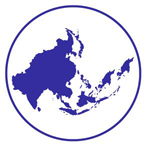Presentation Title
The Japanization of Okinawan Karate
Location
RCC 202
Start Date
12-10-2013 3:45 PM
End Date
12-10-2013 5:15 PM
Abstract
The popular history of Karate describes it as the endpoint in the evolution of Okinawan martial arts, from the primordial Te (Hand), to the early-modern Tōde (Tang Hand), to the modern Karate (Empty Hand). As part of this Karate’s historians acknowledge that its name was changed from Tang Hand to Empty Hand in the 1920s, partly in acquiescence to mainland-Japanese prejudice against Okinawans and partly to bring the name into line with the goals of defending oneself with literally-empty hands and of figuratively emptying one’s Self of egoism. Thus its historians tell a fuller story than expected, demonstrating awareness of identity formation and the “invention of tradition.” However, the popular history of Karate does not acknowledge the possibility that the narrative itself is subject to historical forces. This article investigates the popular historiography of Karate in prewar Japan to reveal that the two past versions of Karate (Te and Tōde) were discursive creations of the twentieth century. This article recontextualizes the modern historiography of premodern Karate to argue that its authors made positive use of prejudice against China, which enabled their Okinawan art to coexist with rather than be subsumed by mainland Japanese arts. The article concludes by putting Karate’s popular history in dialogue with the “invention” framework—dated, but still the default approach to self-described traditions—to critique it as inadequate in analyzing popular historical narratives.
The Japanization of Okinawan Karate
RCC 202
The popular history of Karate describes it as the endpoint in the evolution of Okinawan martial arts, from the primordial Te (Hand), to the early-modern Tōde (Tang Hand), to the modern Karate (Empty Hand). As part of this Karate’s historians acknowledge that its name was changed from Tang Hand to Empty Hand in the 1920s, partly in acquiescence to mainland-Japanese prejudice against Okinawans and partly to bring the name into line with the goals of defending oneself with literally-empty hands and of figuratively emptying one’s Self of egoism. Thus its historians tell a fuller story than expected, demonstrating awareness of identity formation and the “invention of tradition.” However, the popular history of Karate does not acknowledge the possibility that the narrative itself is subject to historical forces. This article investigates the popular historiography of Karate in prewar Japan to reveal that the two past versions of Karate (Te and Tōde) were discursive creations of the twentieth century. This article recontextualizes the modern historiography of premodern Karate to argue that its authors made positive use of prejudice against China, which enabled their Okinawan art to coexist with rather than be subsumed by mainland Japanese arts. The article concludes by putting Karate’s popular history in dialogue with the “invention” framework—dated, but still the default approach to self-described traditions—to critique it as inadequate in analyzing popular historical narratives.

Comments
Presentation is included in Panel 22: Buddhism and Culture in Modern Japan